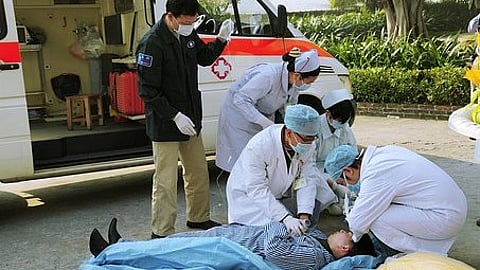

A single thirty-minute lecture is not adequate preparation for emergency medicine (EM) resident physicians to develop a long-term understanding of spinal cord injury (SCI) emergencies, according to new research presented at Physiatry ’23, the Association of Academic Physiatrists (AAP) annual meeting.
After suffering an SCI, some patients experience complications such as autonomic dysreflexia (AD) that necessitate a visit to the emergency department (ED). While past studies showed that AD knowledge is lacking in the ED, research has not indicated if this is due to limited teaching on SCI-related emergencies in emergency medicine (EM) resident education.
To probe depth of knowledge and assess the efficacy of a single lecture, a team of researchers at Case Western Reserve University School of Medicine in Cleveland, Ohio, evaluated residents’ understanding of SCI emergencies before and after an EM didactic session.
“Autonomic dysreflexia is one of the few true rehabilitation emergencies,” says Noah Wickerham, a medical student at Case Western and the study’s presenting author. “Both untreated and improperly treated AD can result in poor clinical outcomes from hyper- or hypotension.”
One lecture is not sufficient to provide a comprehensive understanding of AD diagnosis and management, concluded the researchers, who called for other interventions such as wallet cards designed to be given to providers that outline the presentation and management of AD, as well as wall charts for display in areas frequented by residents
“Because EM physicians are often the first provider that AD-predisposed patients see during an acute exacerbation of AD, it is imperative that EM physicians be provided with the proper educational tools to manage this condition,” continues Wickerham.
In the quality improvement study, 29 EM residents ranging between PGY-1 and PGY-3 levels plus two sub-interns were randomly assigned one of two quizzes before and after an EM lecture, in order to control for variations in quiz difficulty.
In total, 24 participants returned their pretest and 26 returned their posttest, while 13 participants completed ten-week follow-up quizzes comprised of questions similar to the earlier quizzes with altered demographic data. Scores were analyzed using a comparison of means calculator and a p-value of < 0.05 was used to determine statistical significance.
The researchers found that immediately following the lecture, scores significantly improved from 51.6% to 75.4%, and that ten weeks after the initial lecture, scores were not significantly different than baseline at 56.9%.
One lecture is not sufficient to provide a comprehensive understanding of AD diagnosis and management, concluded the researchers, who called for other interventions such as wallet cards designed to be given to providers that outline the presentation and management of AD, as well as wall charts for display in areas frequented by residents.
“I feel that this study is important because it serves to challenge the traditional lecture-based model of residency medical education,” says Wickerham. “The volume and complexity of medical knowledge required to be an effective clinician is constantly growing and changing, and our approach to education and ultimately, protecting our patients must also be flexible. I hope this study is able to make people consider other ways of protecting specific patient populations, such as providing informational, patient-specific material to be carried by patients that can be given to providers who are taking care of them, or by creating educational infographics to be displayed in areas frequented by the target audience.” (PB/Newswise)
